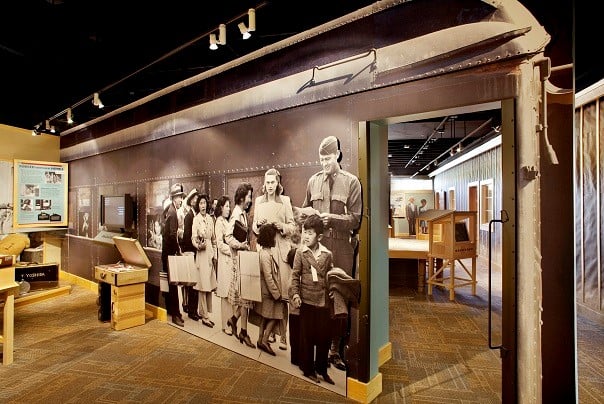
Educators Suggest Ways to Bring the Lessons of Cody Yellowstone’s Living Classroom Home to Students of All Ages
Educators Suggest Ways to Bring the Lessons of Cody Yellowstone’s Living Classroom Home to Students of All Ages
CODY, Wyo., April 21, 2020 – The northwestern Wyoming destination that includes Cody, Wyoming and Yellowstone National Park has always been a living classroom. Here in this massive corner of the country’s least-populous state, students have long discovered lessons in the region’s art and architecture, ecosystems, conservation initiatives, wildlife, Western history and more.
While a real-life field trip to this 6,697-square mile tourism mecca is not possible right now, home-bound students can learn much about the region online. The region’s many museums and attractions as well as Yellowstone National Park offer a variety of online tools and resources to aid a trip-planning project.
“This is one of the most history- and science-rich regions in the American West, and even young scholars can benefit from learning its lessons,” said Claudia Wade, executive director of the Park County Travel Council, the marketing arm for the region that includes the towns of Cody, Powell and Meeteetse as well as the valley east of Yellowstone National Park. “With a little guidance from parents and teachers, students can use the area’s many online resources to unearth the region’s mysteries and discover its lessons.”
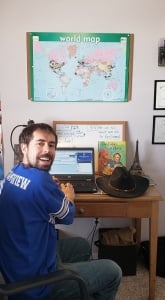
Denver teacher Ken Balcom sometimes shows his English as a Second Language students objects like a cowboy hat to visually represent a topic of discussion.
Located east of Yellowstone, Cody’s many museums and attractions can also be used to virtually teach students about a broad range of sciences, human history, psychology and much more.
For example, important lessons in American history can be found at the Heart Mountain WW II Interpretive Center, a Japanese-American Confinement site where some 14,000 American citizens of Japanese descent were confined after the bombing of Pearl Harbor. Heart Mountain typically hosts busloads of student groups, who are guided through exhibits showing how those confined to the camp lived. While it is closed, Heart Mountain continues to offer online programming, and parents and teachers can subscribe to weekly updates.
With five museums under one roof, the Buffalo Bill Center of the West in downtown Cody is another treasure trove of information. Among those museums, the Draper Natural History Museum and the Plains Indian Museum are particularly useful resources for students.
With so many resources available, how do home-schooling parents and virtual teachers determine which resources are most appropriate for their students? We asked three teachers for ideas.
Mary Clare Lane is a veteran U.S. Government teacher at Solon High School in Ohio. Lynn Kelly is a teacher at Fox Hollow Elementary School near Denver and was recently named Fox Hollow Educator of the Year. Ken Balcom is an English as a Second Language (ESL) teacher at Fairview Elementary School in Denver who regularly uses project-based learning to teach his students in grades K through 5.
Plan a ‘someday’ trip:
All three educators suggested the framework of planning a family trip to teach students of all ages about cross-curricular subjects
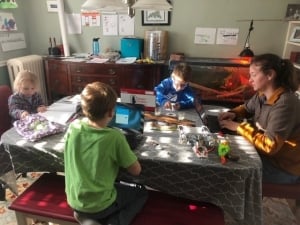
Ohio high school educator Mary Clare Lane teaches high school government classes alongside home-schooled, tech-savvy kids Jack, Charlie and Maggie.
ranging from history to science.
“Depending on the age of the student, the project can take on many different directions,” said Kelly. “A trip-planning project can teach kids about geography, map-reading and budgeting time and money.”
How a trip-planning project is defined depends on the age of the student. “Elementary students can learn about cultures and communities, middle school students begin to analyze the cause and effect of various actions and activities and high school students can explore primary source documents that are critical for student analysis,” said Lane.
For younger students, Kelly suggests asking them to answer these questions using the online resources: How long will the visit last and why? Where will you stay? What activities will you experience when you’re there? “Even young students can use park maps to plan a route, find a hike and plan a budget,” she said.
Planning a trip is a good way to build vocabulary too, noted Balcom, the ESL teacher. “Beginner level students can click around sites and fill in a simple sentence frame: At the museum I saw BLANK. Students who are more advanced can use richer language and write a more detailed response, comparing and contrasting multiple places or sources. By giving short, relatively open-ended assignments and questions, students can focus their energy on engaging with the content instead of understanding the directions.”
Here are some additional specific project ideas:
Elementary students
- Find objects at home that are representative of the destination. When teaching virtual trips, Balcom brings in objects that illustrate the destination, such as acowboy hat or an old post card. Balcom noted that his students are especially fond of YouTube videos like those found on the Center of the West site.
-
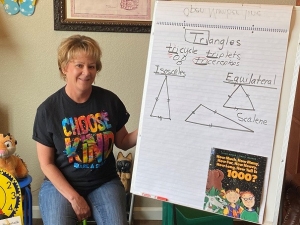
Veteran elementary school teacher Lynn Kelly, retiring at the end of the school year, set up a virtual classroom in her sitting room.
Lane suggests that even the youngest students watch the Heart Mountain Kids Behind Barbed Wire video. Describe the setting, people and main ideas related in the video. Draw or paint a picture from the point of view of someone living here.
- Have kids identify Yellowstone animals, research them and write a report. The Draper Museum of Natural History offers online interactive tools such as of bighorn sheep, yellow-bellied marmot and other creatures that live in the Greater Yellowstone ecosystem. Using the online sound library, listen to the sounds made by a bull moose, Clark’s nutcracker, grizzly bear, wolves and other wildlife.
- Create a history canvas using Center of the West interactive resources, suggested Lane. Use the provided platform to create a scene. Then have the student research three of the items that you decided to include in the scene and relate the information in either report, book or PowerPoint format.
- Schedule a Skype session with Center of the West educators to learn more about the region. The Center of the West offers a variety of themed Skype classroom sessions.
- Get artsy with some Yellowstone arts and crafts ideas such as an “If I Ran the Park” collage and a making a Yellowstone sketchbook.
- Take the Yellowstone pledge and make sure all family members do too.
- Ask a Yellowstone National Park ranger for the answers. Yellowstone’s many online resources include an “ask a ranger” section with answers to the questions most frequently asked by younger visitors. Become a Junior Ranger at home by downloading the Junior Ranger book and using online resources to complete
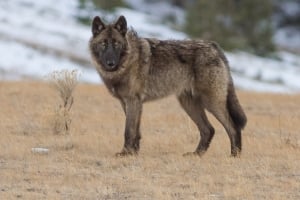
The National Park Service’s Junior Ranger program covers a variety of subjects, including park wildlife such as the gray wolf.
the tasks.
- Play interactive games like “History Canvas,” based on the popular “Create Your West” kiosk in the Whitney Western Art Museums. The interactive programming allows students to mix and match foregrounds, backgrounds, landscapes, shelters, animals and trees. Use your social channels to share your masterpiece with friends.
Middle School Students
- Use the various resources available at the Center for the West to develop a presentation about what life was like in frontier America. Include perspectives from at least two groups as they relate to culture, politics and natural resources.
- “Look for ways to take advantage of the cross-curricular connections,” suggested Balcom. “Geography, biology, history and earth science all come together in the same region and are intrinsically intertwined.”
- Study the impact of beetle kill in a forest and listen to an interview with a scientist. Discuss ways to minimize your family’s impact on the environment during the trip.
- Discuss the National Park Service’s rules for keeping a safe distance from wildlife. Identify the rules and discuss what could happen if you don’t follow them, using videos, blogs and other online resources.
- Learn the stories of the Plains Indians and Buffalo using Skype-based programming and pre-set learning objectives that include learning about the importance of the tipi and having students design and assemble their own tipi.
High School Students
- It has been 25 years since Canadian gray wolves were reintroduced to Yellowstone National Park, and the initiative is still controversial. Research all sides of the issue by listening to interviews, learning about the reintroduction process and researching the reasons wolves had disappeared from the park. Weigh the merits of the program against the continuing concerns of ranchers and other citizens.
- Using Skype, study the Plains Indian art and how culture, individuality, technique and place in history influence an artist’s production.
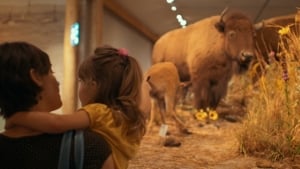
The Buffalo Bill Center of the West is full of lessons for people of all ages.
- Using the online resources of the McCracken Research Library, report on the life and impact of painter Frederic Remington.
- Watch the Heart Mountain Kids Behind Barbed Wire video and report from your choice of a historical or psychological perspective. Those on the history track should research the enactment of Executive Order 9066 and discuss why it was created, how it was carried out and how its execution is reflected in the video. From the psychological perspective, select one of the theories of development and explain how childhood development would be impacted by living under those circumstances.
- Report on what it was like to be a national park ranger during Yellowstone’s early days using archival research material available through the McCracken Research Library.
###
Home of the Great American Adventure, Cody Yellowstone is comprised of the northwestern Wyoming towns of Cody, Powell and Meeteetse as well as the valley east of Yellowstone National Park. The region is known for rodeos, authentic guest and dude ranches, world-class museums and recreational adventures that reflect the adventurous spirit of the visionaries and explorers who brought the remote region to the world’s attention.
Related hashtags:
#YellowstoneCountry
#CodyWyoming
#CenteroftheWest
#BuffaloBill
#Yellowstone
#ThatsWY
Media contact:
Mesereau Travel Public Relations
720-284-1512
